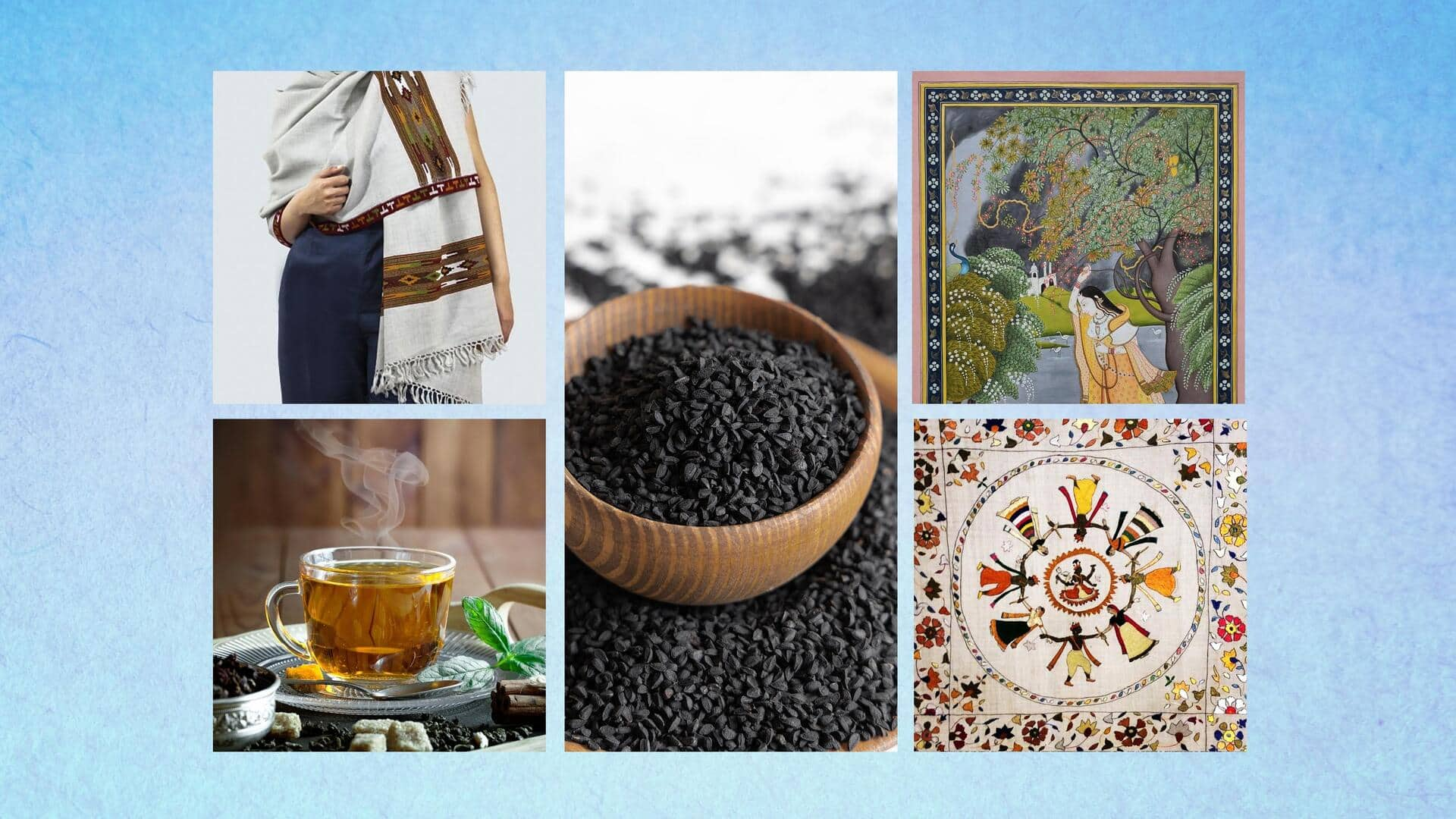
Discover the GI-tagged treasures of Himachal Pradesh
What's the story
Himachal Pradesh, a state with stunning scenery and traditions, has long served as a source of inspiration for tourists and culture enthusiasts. In addition to its natural beauty and traditions, this state in northern India is known for its unique agricultural and handicraft products. The coveted Geographical Indication (GI) badges are found on many of these exceptional products. Check out some.
Tag 1
Kullu shawl
The Kullu shawl is well-known around the world for its quality and designs. Kullu shawls were traditionally patterned using bright colors like yellow, green, red, orange, and blue over a base of black, white, and brown or natural grey. These days, pastel colors are replacing these conventional colors. Angora, Pashmina, Yak wool, sheep wool, and hand-spun fabric are used to manufacture Kullu shawls.
Tag 2
Kangra tea
Kangra tea is well known for its high quality, distinctive aroma, and fruity undertones. It has a little milder flavor than Darjeeling tea. The climate, the distinctive topography and soil, and the coolness of the snow-covered mountains in Kangra contribute to the creation of this premium tea. A majority of Kangra teas have an agreeable mild pungency and a green, vegetal scent.
Tag 3
Himachali kala jeera (black cumin)
One of the most economically significant medicinal plants and spices is Himachali kala jeera, or black cumin. Kala jeera, which is typically found growing wild in the northwestern Himalayan forests and grassy slopes, thrives in the high mountainous districts including Kinnaur, Kullu, Chamba, Sirmaur, Lahaul-Spiti, and Shimla which are located at an elevation of 1850 to 3100 meters.
Tag 4
Chamba rumal (handkerchief)
Chamba rumals (handkerchief) are primarily created from square or rectangular fabrics (traditionally silk or muslin) in a range of sizes, with the earliest records of the region dating back to the second century BC. Experts in miniature art generally draw the base art, which is distinguished by its delicate lines. After the artwork is finished, the fabric is painstakingly embroidered with a double-sided stitch.
Tag 5
Kangra paintings
The platonic love story of Radha and Krishna serves as the main inspiration for Kangra paintings. Even though many nobles supported Kangra painting, this art form only really gained popularity during the reign of Maharaja Sansar Chand. The popular Bhakti movement and devotional ideals gave rise to the depictions of mythological love stories that were popular among the general masses in the early periods.